GPT-powered tools have become a core part of modern document workflows, supporting analysis, compliance reviews, research tasks, and routine PDF processing. In response to this shift, Adobe introduced Acrobat GPT, an AI assistant built into Acrobat to help users summarize content, extract key information, and clarify complex sections directly inside a PDF.
In this article, I explain Acrobat GPT's capabilities, how it functions in professional settings, and when it is most effective. Further, I also introduced UPDF AI Online as a browser-based alternative with broader features. Explore both tools and choose the workflow that strengthens your document tasks.
Part 1. What Is Acrobat GPT?
Acrobat GPT is a GPT-powered AI assistant by Adobe that connects Acrobat's PDF features with ChatGPT, and I use it to handle document tasks directly inside the chat interface. It helps me summarize files, answer PDF-based questions, highlight key points, and simplify complex sections without opening the full Acrobat application. This setup lets me review and interpret content more efficiently in a conversational space.
It works differently from the AI tools built into Acrobat software because everything happens inside the ChatGPT environment, not the Acrobat app. As a result, Acrobat GPT streamlines my reading flow and reduces friction in my routine by giving me quick insights without switching windows. I can move through long PDFs faster, locate important details instantly, and maintain a steady pace while staying in one chat workspace.
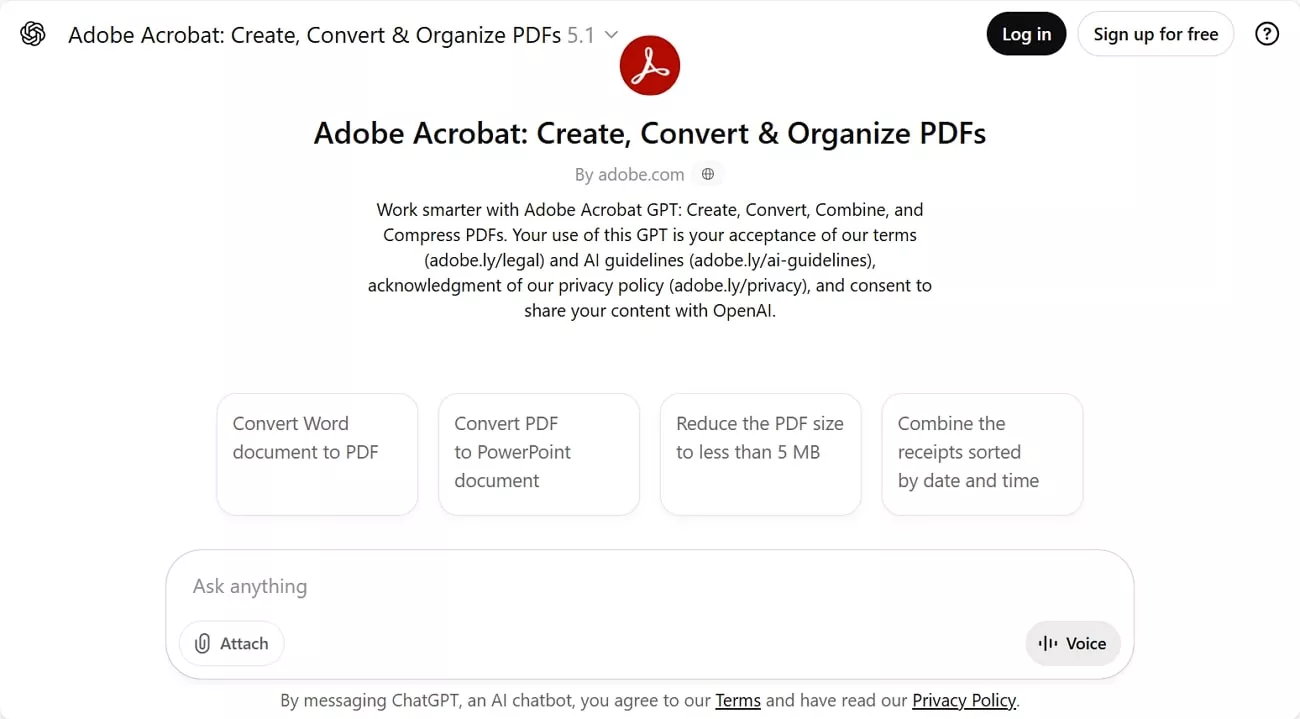
Key Features
- Combine PDF: With the option to undo and redo the changes, users can combine multiple files in real-time.

- AI Assistance: The assistant answers document questions, summarizes content, cites references, and suggests logical follow-up inquiries.

- Summary Tools: It generates concise document summaries, outlines key insights, and links each highlight to its source.

- Voice Input: It lets me ask questions by speaking naturally, allowing faster interaction without typing anything manually.
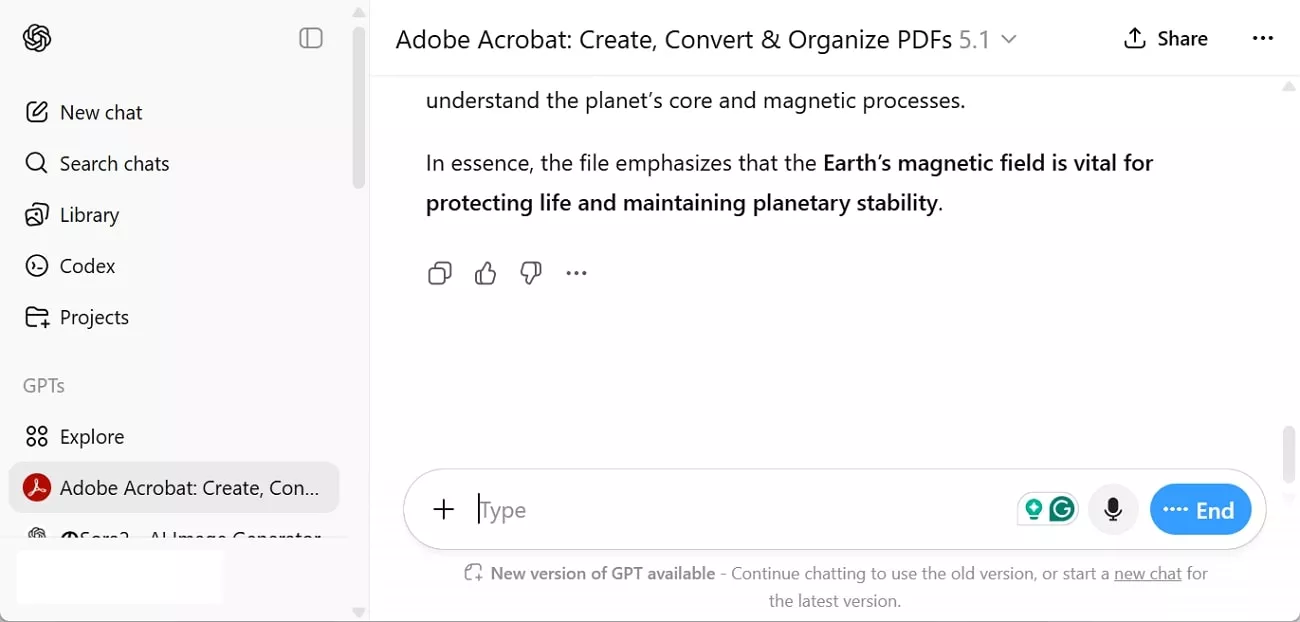
- Convert PDF: Acrobat GPT allows me to convert PDF files into word or any other format with a single prompt that I was able to confirm or deny as my preference.

Furthermore, during my evaluation of AI tools, I also reviewed UPDF GPT, released in early 2023 as UPDF's initial AI component. Development on this version has since paused, as the team introduced UPDF AI Online, a more advanced, comprehensive online platform. This newer tool expands the original idea with stronger features and a more modern workflow, which I explain in the next section.
Part 2. A Practical and Well-Rounded Alternative to Acrobat GPT
Although I use the Acrobat GPT for quick checks, it doesn't give me deeper analytical modes or extended reasoning tools. That's why I turn to UPDF AI Online, as it has DeepThink mode that delivers structured insights for complex documents. This feature guides my reading and clarifies heavy content that requires careful understanding.
Therefore, I rely on it when working through long reports, dense policy papers, or multilingual research files. Its layered summaries highlight important arguments and reveal hidden links within difficult material. These focused insights help me organize information clearly and grasp complex ideas without losing direction.

Key Features
- PDF Summarizer: Creates short, clear summaries from long PDFs, helping me understand key ideas much faster.
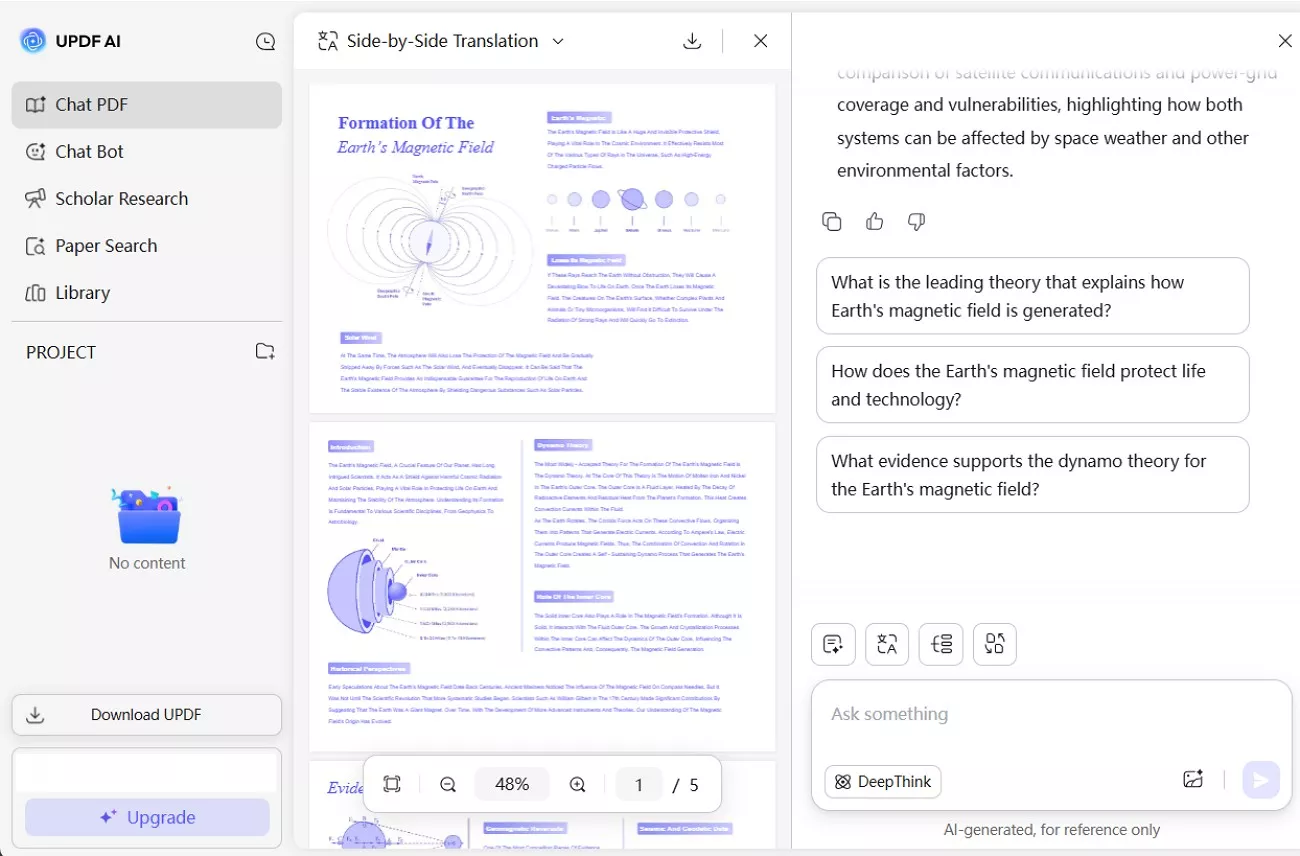
- PDF Translator: Translates selected text or entire PDFs accurately, making it easy for me to read multilingual content. It supports side-by-side translation.

- Chat PDF: It answers my questions about the document, helping me understand complex sections without confusion.
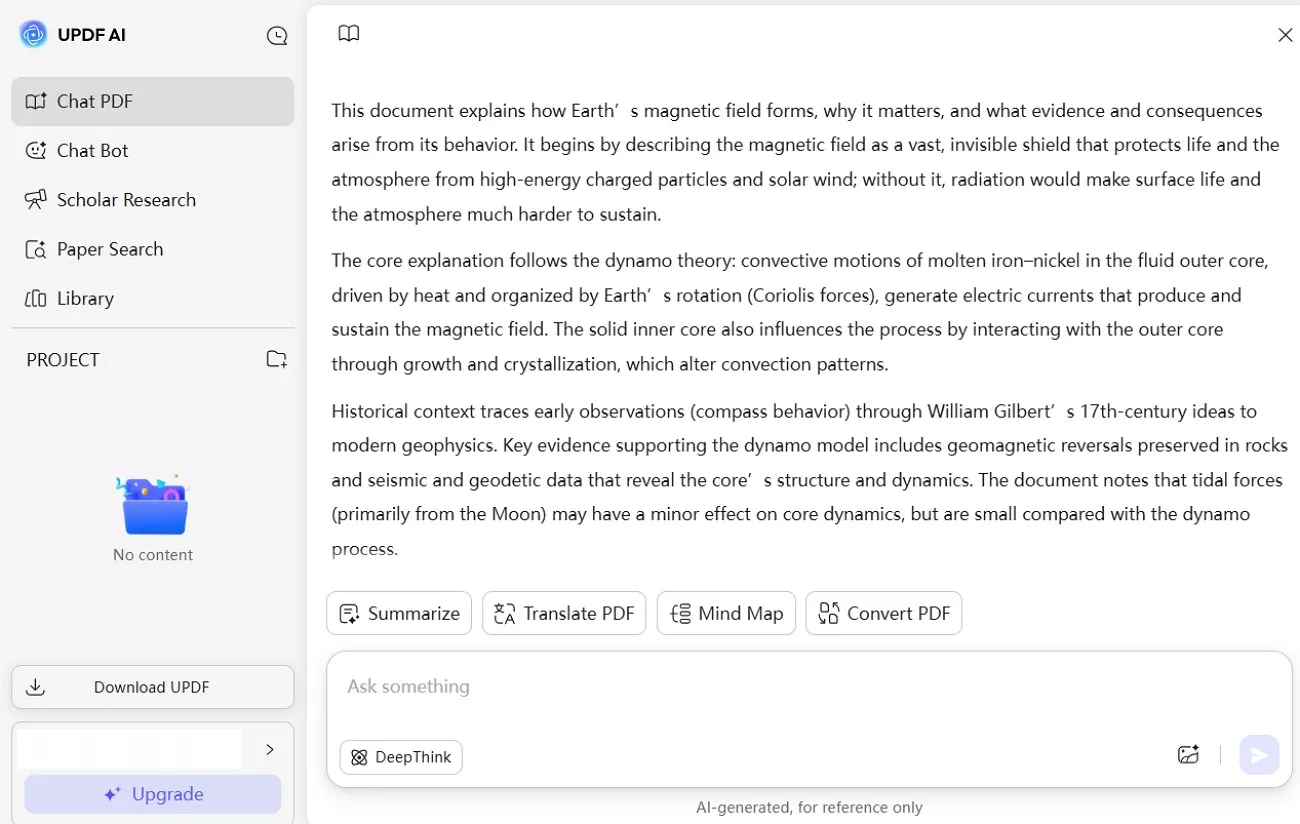
- PDF to Mindmap: Converts detailed PDF content into visual mind maps, helping me organize ideas more effectively.

- Deep Research: Supports structured academic analysis, helping me gather insights and references directly from uploaded documents.
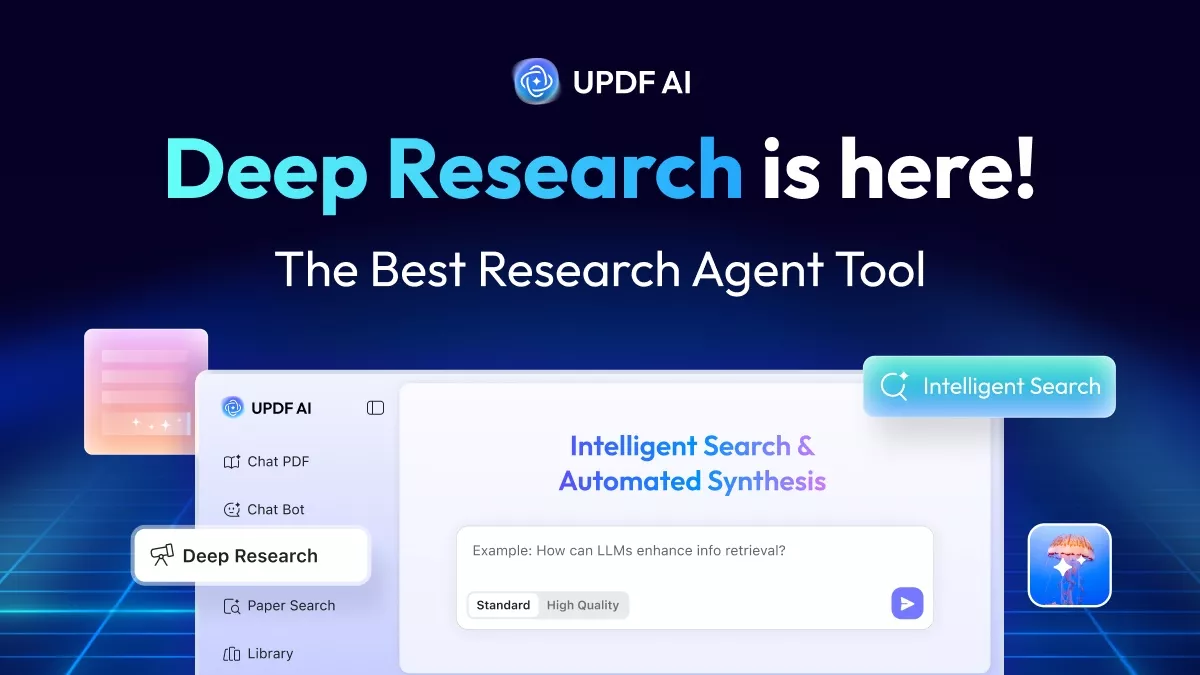
How UPDF AI Online Compares to Acrobat GPT
I do not feel that one of these tools is superior to the other in my daily work. Instead, I just observe how each fits various situations in my workflow, and the differences below assist me in choosing a tool to be used in particular tasks:
- Pricing: Acrobat GPT is free but gives me limited prompts, while UPDF AI Online offers plans with more accessibility options. With UPDF AI, users can get 100 free prompts and 5 PDF uploads.
- Depth of Analysis: Acrobat GPT handles general questions and summaries inside Acrobat, while UPDF AI Online's DeepThink mode gives me more structured responses when I'm dealing with long or complex documents.
- Ease of Access: I open Acrobat GPT when I'm already working inside Acrobat, but I choose UPDF AI Online when I want something that loads instantly in my browser.
- Mind Mapping: I generate visual mind maps in UPDF AI Online when I want a clearer, idea-focused view of dense material, while Acrobat GPT keeps everything text-based inside Acrobat.
- Side-by-Side Translation: Acrobat GPT provides standard reading and summarization within Adobe, while I rely on UPDF AI Online for dual-pane translation when I need to compare the original text with its translated version.
- Scholarly Research: I use UPDF AI Online's research tools when I need academic insights or reference support, while Acrobat GPT stays centered on reading and Q&A within the Acrobat workspace.
Part 3. Acrobat GPT VS UPDF AI Online: Which One Should You Choose?
Choosing between these tools becomes easier when I look at how each supports a different working style. Both aim to simplify PDF tasks, but they shine in distinct scenarios based on user preferences:
When Acrobat GPT Makes More Sense
I choose Acrobat GPT when I need quick checks that match my current workflow. It helps me review short sections and get simple guidance without interrupting my pace. The clean interface keeps my focus steady and supports smooth reading across multiple documents. I rely on it for clarifications, comment checks, and tasks that require steady organization. Using one consistent workspace helps me maintain rhythm and stay organized during busy sessions.
When UPDF AI Online Is the Better Fit
I turn to UPDF AI Online when I need quick, browser-based AI features without desktop software. Additionally, it gives fast summaries, translations, rewrites, and clarifications from any device. I like using it during short tasks or when I'm moving between locations. Its flexible output options and lighter pricing suit moments when I only need simple AI help. The instant loading also makes it convenient for quick checks or mobile-friendly workflows.
Moreover, the PDF-to-mind-map conversion makes it quite easy for me to read lengthy PDFs. And the side-by-side translation is a very helpful feature especially for reading a PDF in foreign language.
Conclusion
To conclude, working with PDFs becomes easier when I use tools that match my workflow, and Acrobat GPT helps me stay productive whenever I need quick checks. Its summaries and smooth interface support me during long review sessions, especially when my files are already organized within Acrobat.
At the same time, UPDF AI Online gives me a flexible, browser-based option for quick tasks or deeper analysis. Both tools enhance my PDF routine in different ways, and the better choice depends on personal workflow needs. You can explore UPDF AI whenever you want, simple web-first AI help.
 UPDF
UPDF
 UPDF for Windows
UPDF for Windows UPDF for Mac
UPDF for Mac UPDF for iPhone/iPad
UPDF for iPhone/iPad UPDF for Android
UPDF for Android UPDF AI Online
UPDF AI Online UPDF Sign
UPDF Sign Edit PDF
Edit PDF Annotate PDF
Annotate PDF Create PDF
Create PDF PDF Form
PDF Form Edit links
Edit links Convert PDF
Convert PDF OCR
OCR PDF to Word
PDF to Word PDF to Image
PDF to Image PDF to Excel
PDF to Excel Organize PDF
Organize PDF Merge PDF
Merge PDF Split PDF
Split PDF Crop PDF
Crop PDF Rotate PDF
Rotate PDF Protect PDF
Protect PDF Sign PDF
Sign PDF Redact PDF
Redact PDF Sanitize PDF
Sanitize PDF Remove Security
Remove Security Read PDF
Read PDF UPDF Cloud
UPDF Cloud Compress PDF
Compress PDF Print PDF
Print PDF Batch Process
Batch Process About UPDF AI
About UPDF AI UPDF AI Solutions
UPDF AI Solutions AI User Guide
AI User Guide FAQ about UPDF AI
FAQ about UPDF AI Summarize PDF
Summarize PDF Translate PDF
Translate PDF Chat with PDF
Chat with PDF Chat with AI
Chat with AI Chat with image
Chat with image PDF to Mind Map
PDF to Mind Map Explain PDF
Explain PDF Scholar Research
Scholar Research Paper Search
Paper Search AI Proofreader
AI Proofreader AI Writer
AI Writer AI Homework Helper
AI Homework Helper AI Quiz Generator
AI Quiz Generator AI Math Solver
AI Math Solver PDF to Word
PDF to Word PDF to Excel
PDF to Excel PDF to PowerPoint
PDF to PowerPoint User Guide
User Guide UPDF Tricks
UPDF Tricks FAQs
FAQs UPDF Reviews
UPDF Reviews Download Center
Download Center Blog
Blog Newsroom
Newsroom Tech Spec
Tech Spec Updates
Updates UPDF vs. Adobe Acrobat
UPDF vs. Adobe Acrobat UPDF vs. Foxit
UPDF vs. Foxit UPDF vs. PDF Expert
UPDF vs. PDF Expert

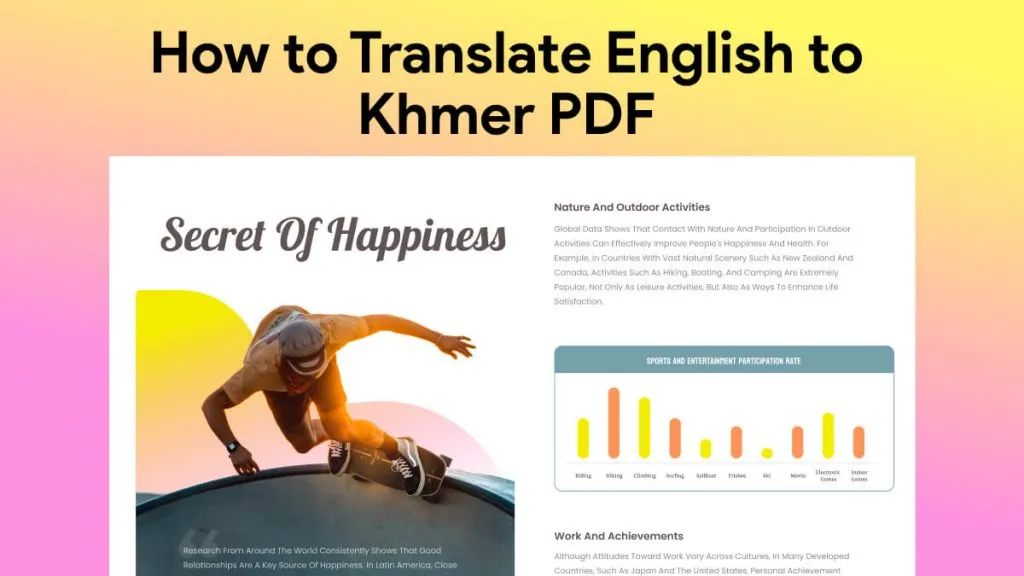
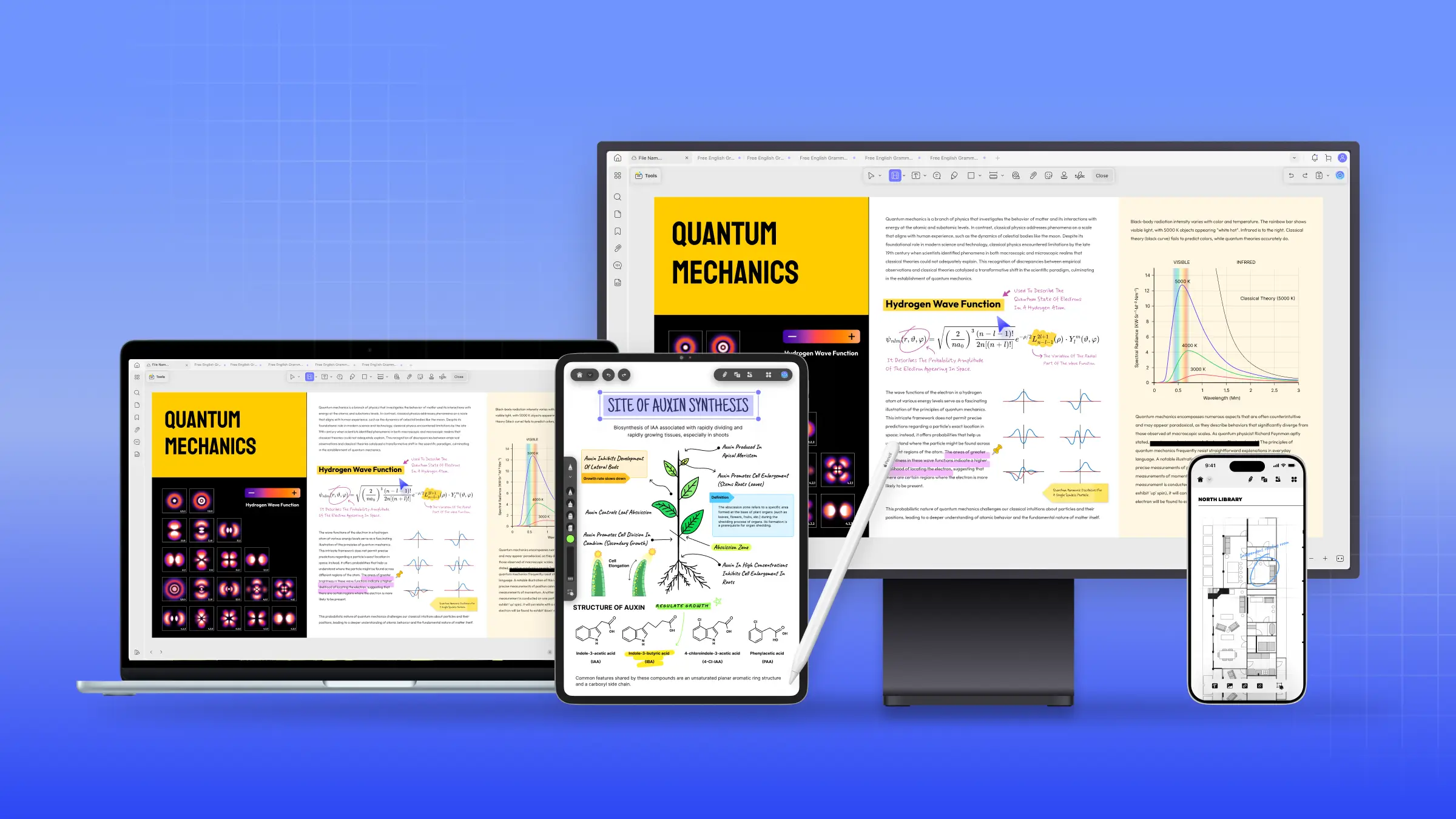

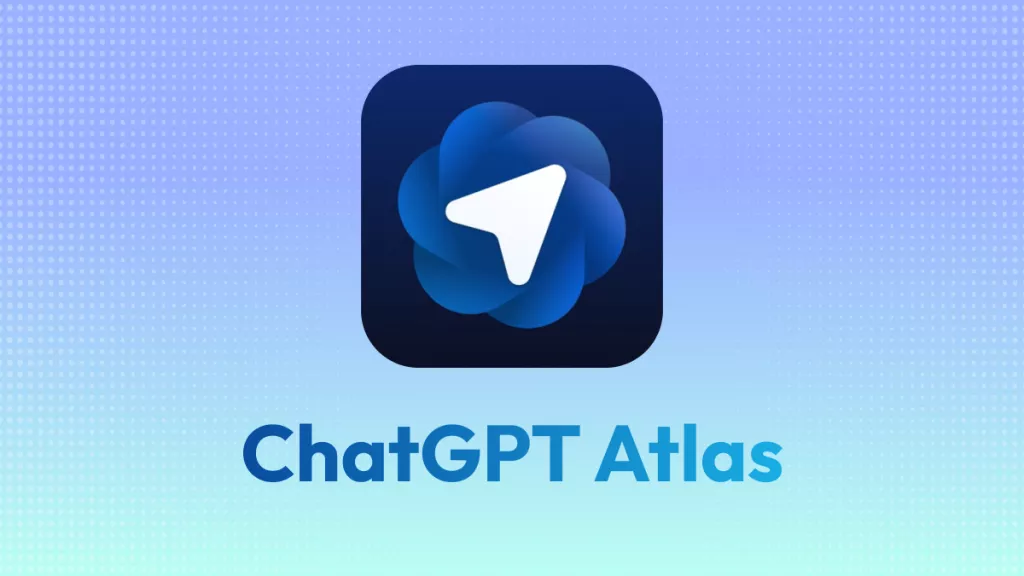
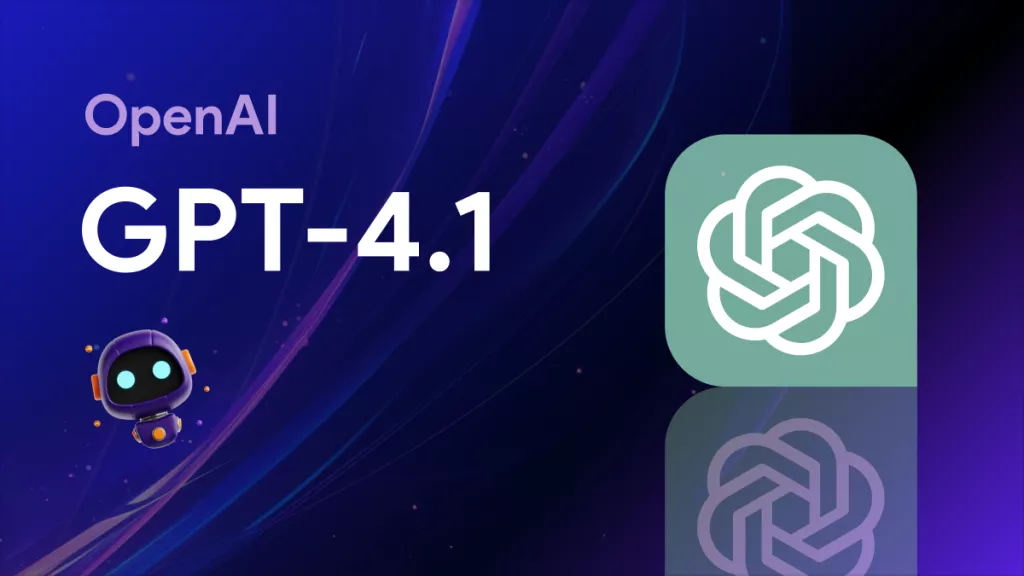

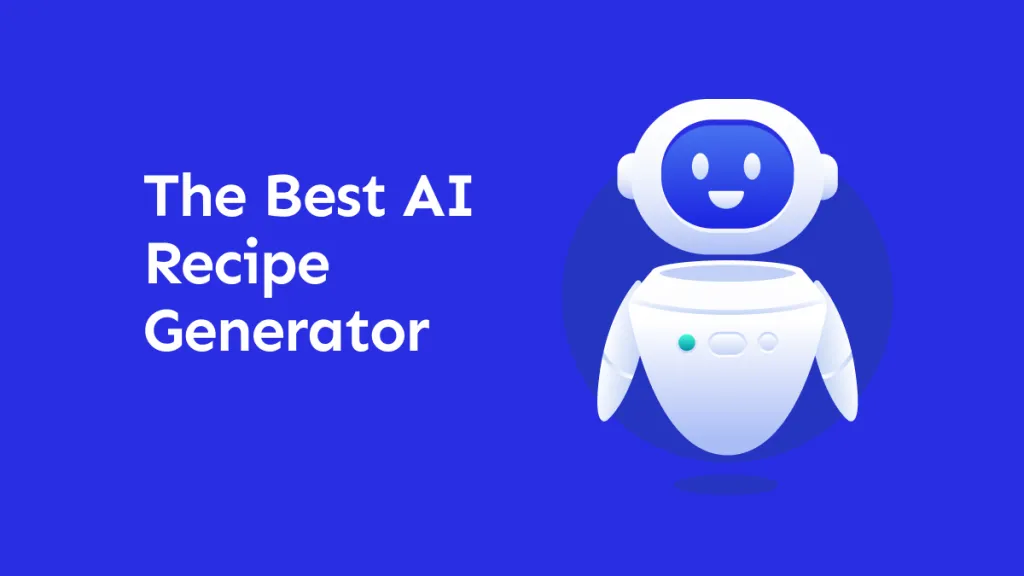
 Lizzy Lozano
Lizzy Lozano 

 Enola Davis
Enola Davis 
 Enola Miller
Enola Miller 